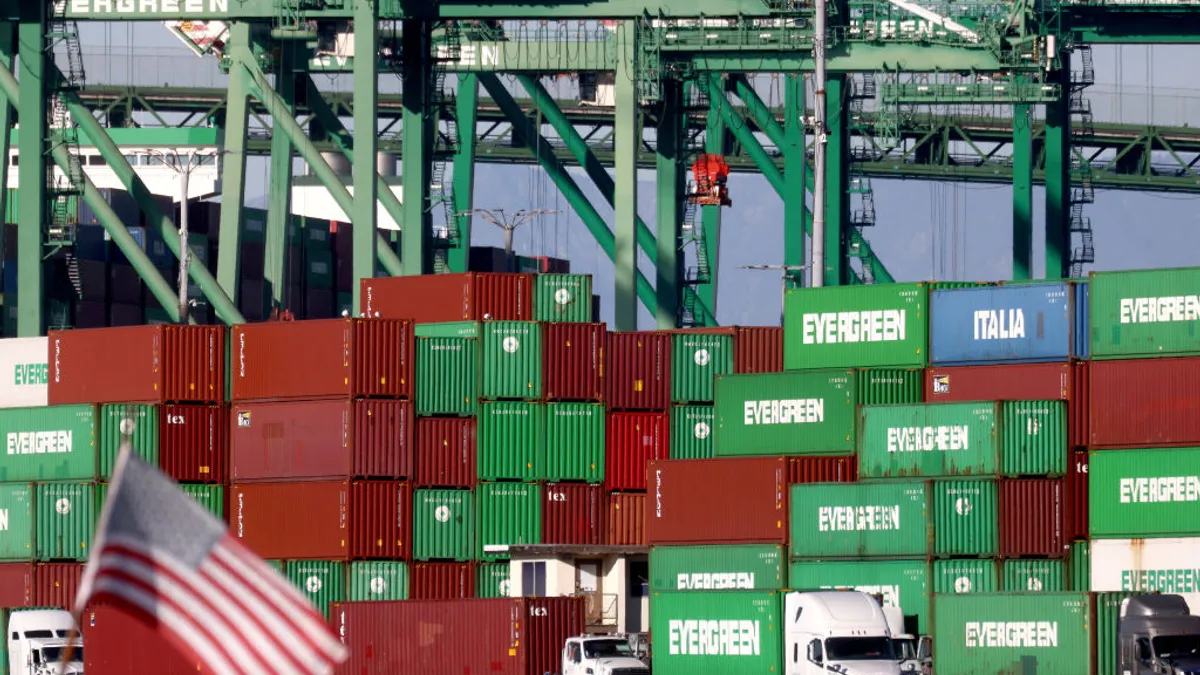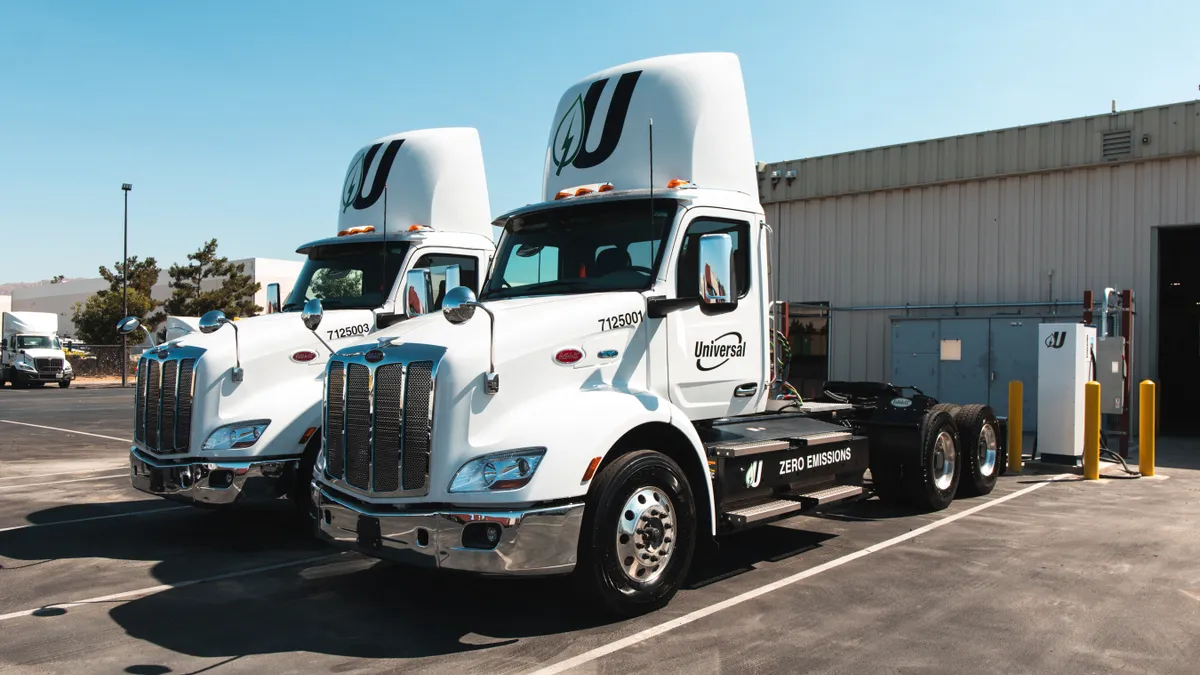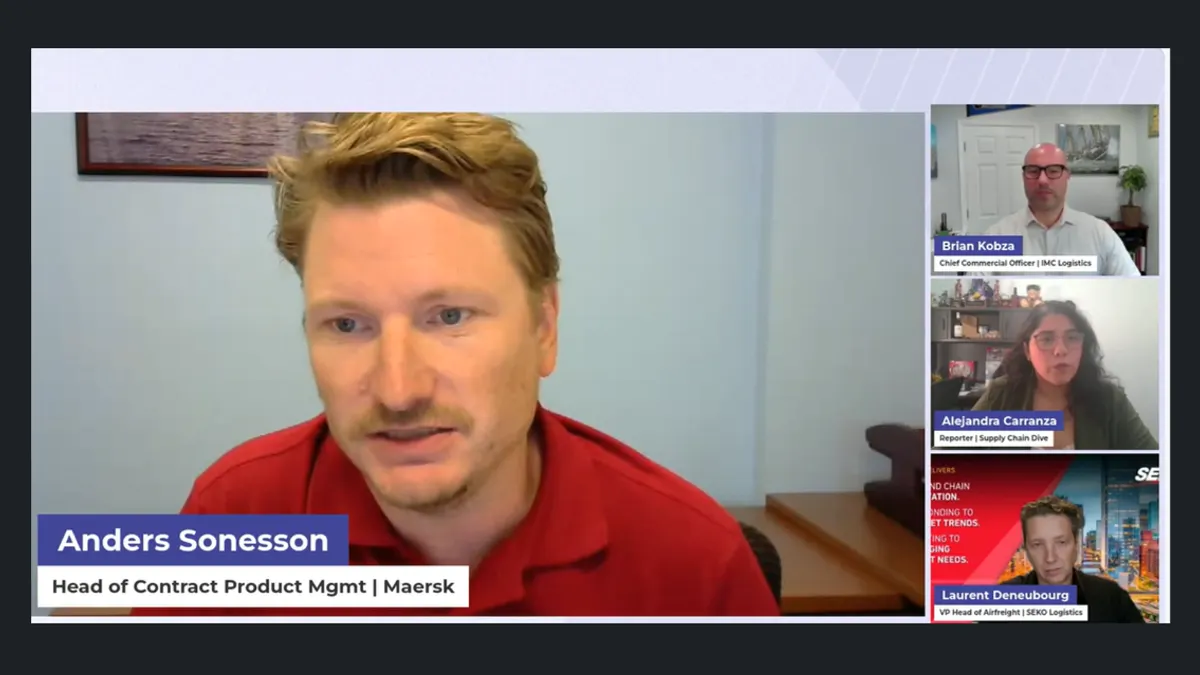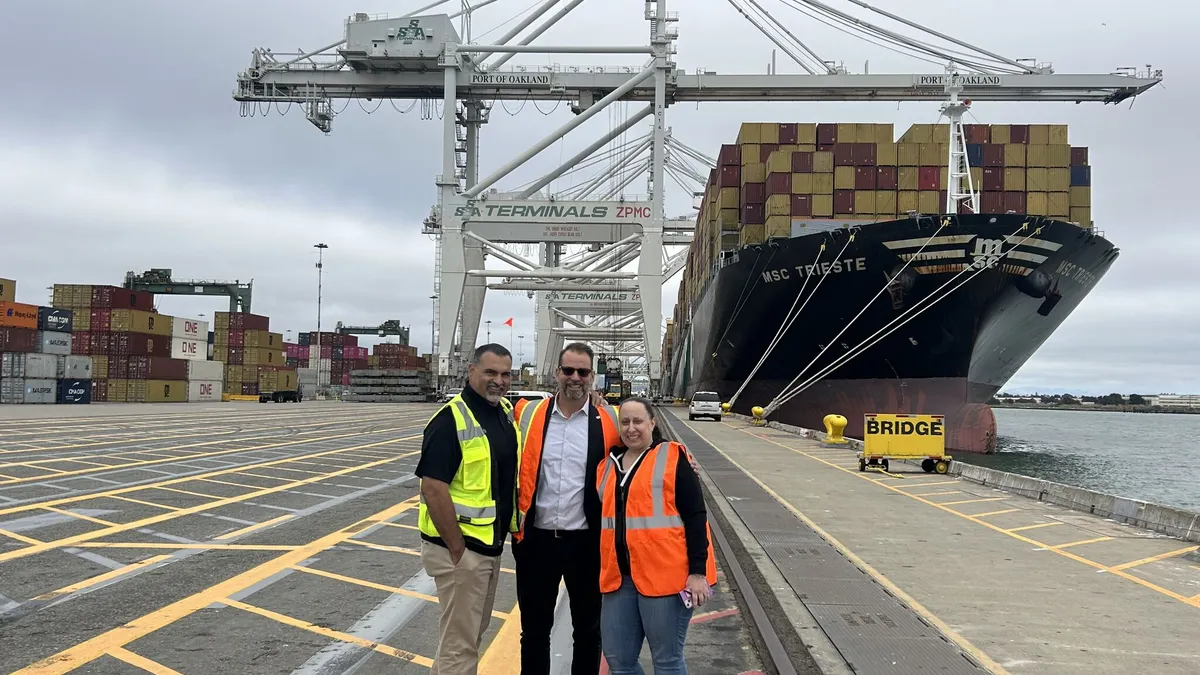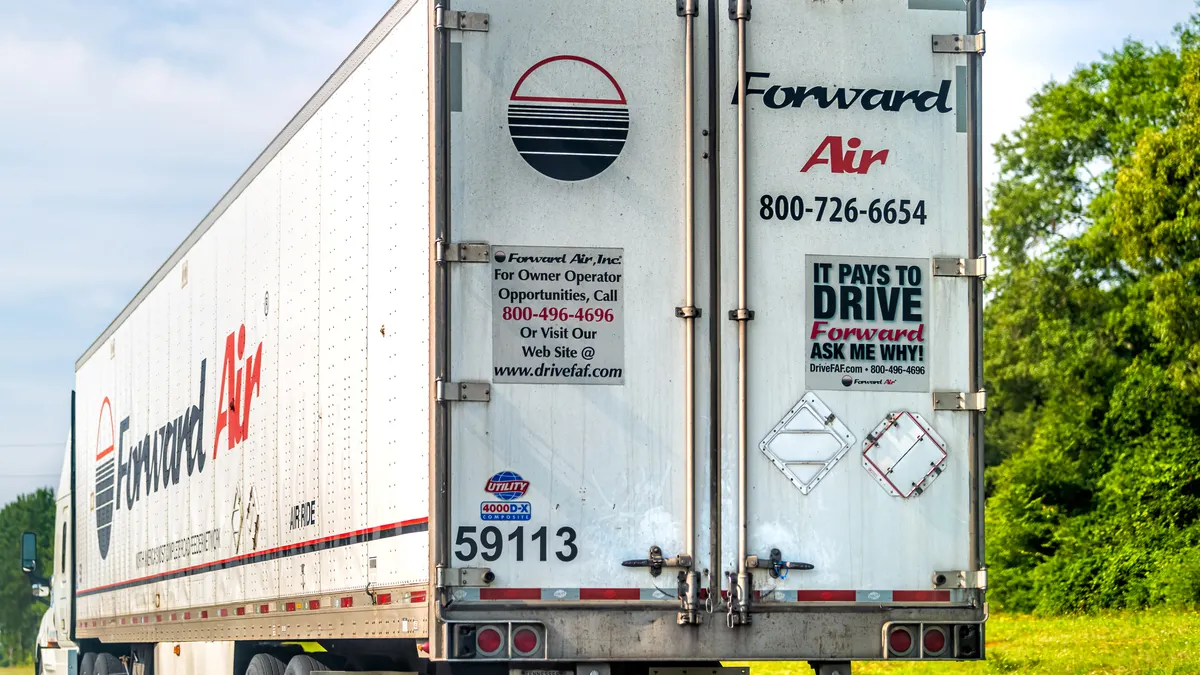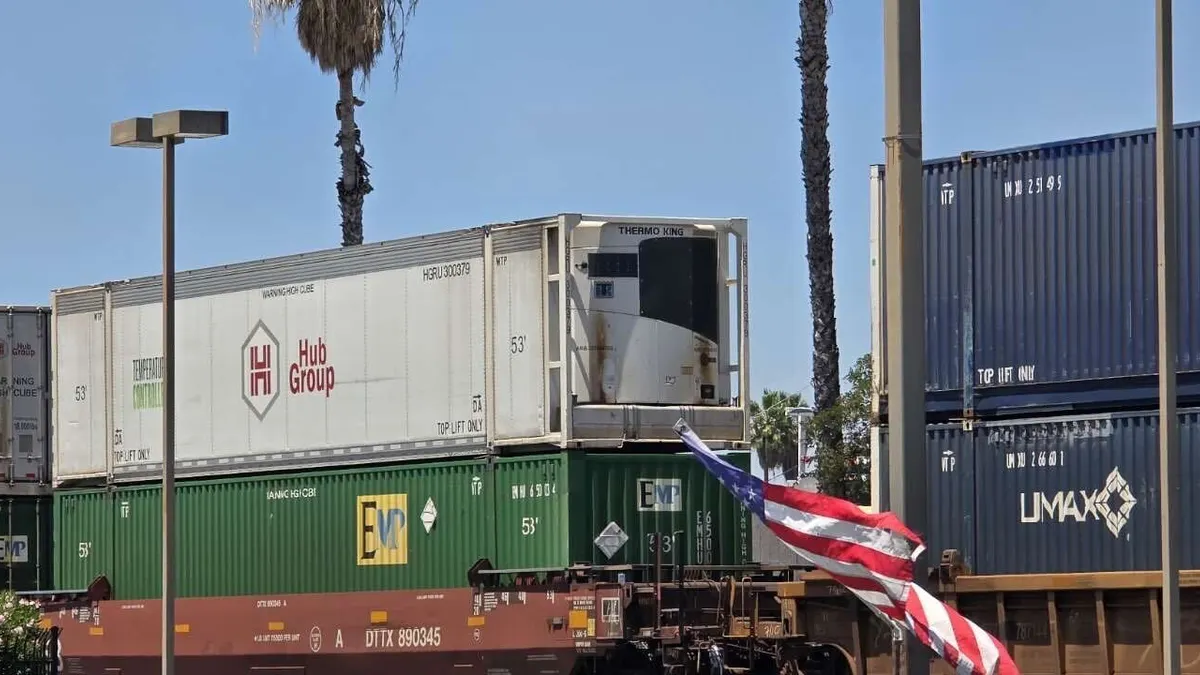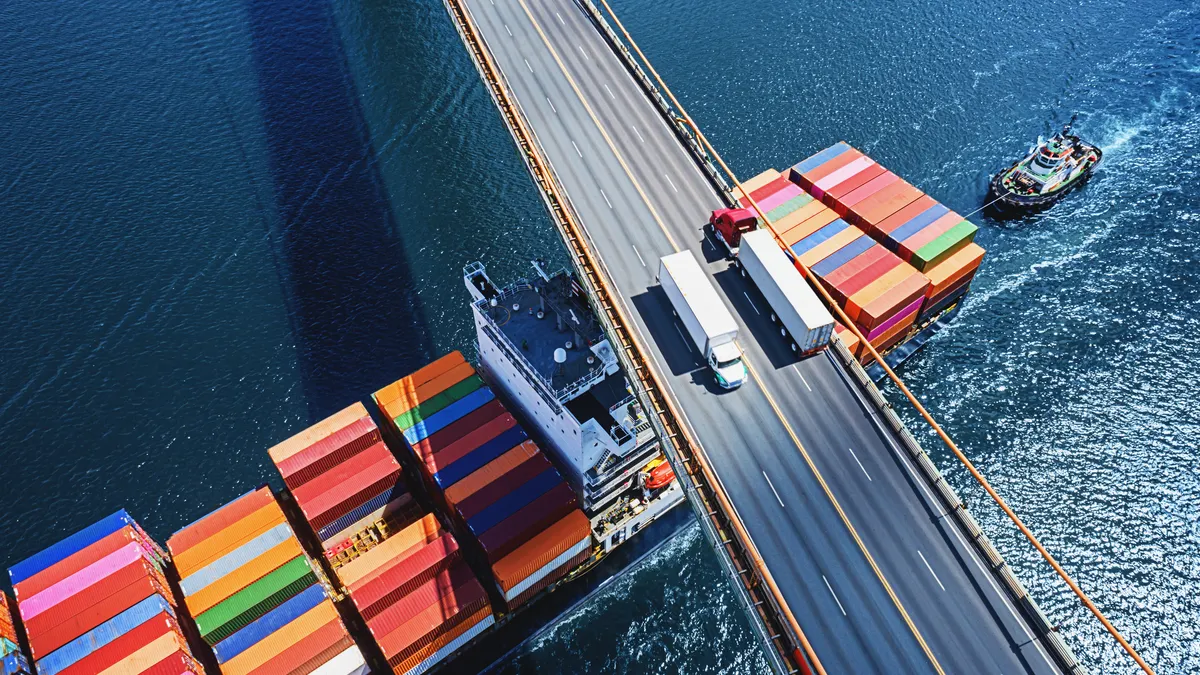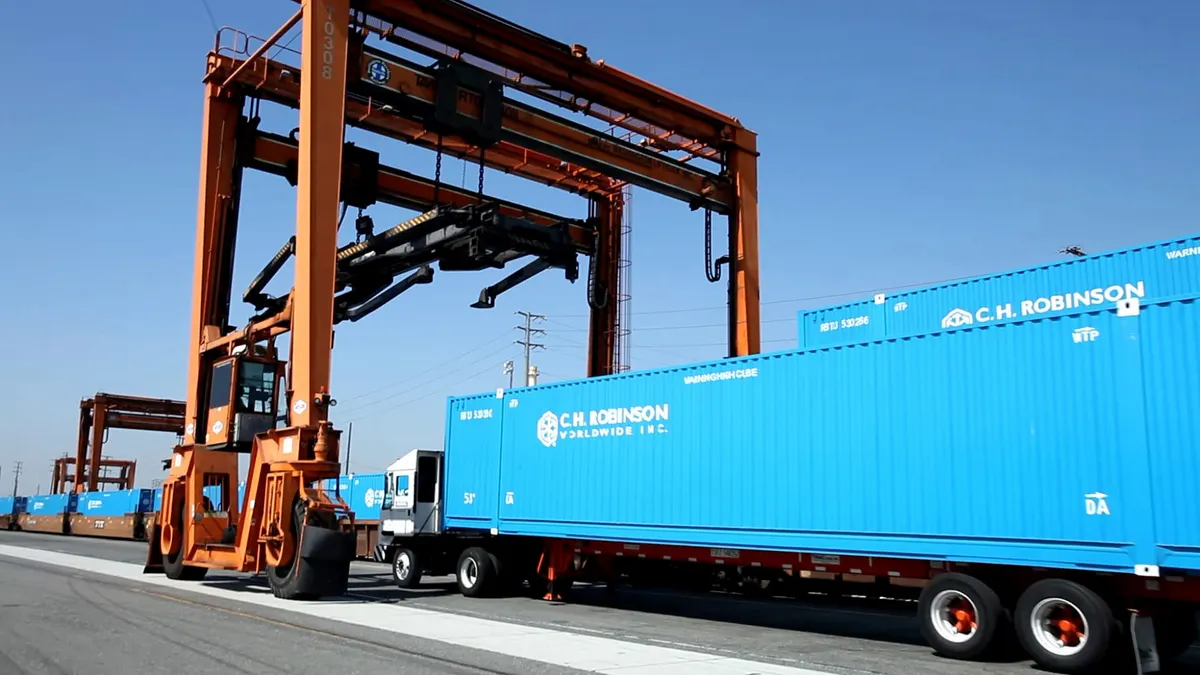First, it was operating hours at warehouses. Then, it was chassis and yard space. Now, empty containers are getting a moment in the sun as a key bottleneck to resolve before port congestion can ease at the San Pedro Bay.
If a yard is full with empty containers destined for export, there is no space to unload an import. And if there is no space for new containers at marine terminals, drayage providers cannot return empty boxes after a delivery, leaving a chassis stuck.
Private stakeholders are taking action to work with the port and ease the number of empty containers on dock, Gene Seroka, executive director at the Port of Los Angeles, said during a media briefing last week.
"We've got about 65,000 empty container units sitting on the docks right now," said Seroka. Clearing these can help "speed our imports to market," and the "propensity is there" to do just that based on recent conversations among port stakeholders.
Ever since the shift to 24/7 supply chains was announced by President Joe Biden, port stakeholders at the Port of Los Angeles and Port of Long Beach in California have been meeting multiple times a week to discuss practical ways to clear the congestion. Last week, port representatives pushed for moves to clear empty containers from yards.
"We’ve asked all terminals and shipping lines to open up and accept as many empties as possible," Phillip Sanfield, director of media relations at the Port of Los Angeles, said in an email. "We can’t require it but we are strongly encouraging it."
As private companies, marine terminal operators have no obligation to receive empty containers. Often, the incentive is economic: Terminals need business from ships, and shipping lines prefer when their vessels are full on the return trip. Empty containers play a key role in this equation, filling up slots on ships while also ensuring shippers in export countries like China have containers to fill when they need them.
The Port of Los Angeles alone helps reposition 90,000 empty containers on an average week, according to Seroka. But this year has been different. The port is receiving 30% more empty containers, and they're not moving out as quickly as they come in.
"We've got to double our efforts to get these empties out and back to Asia to preposition those assets for the next round of imports. But this is where it becomes a math problem," Seroka said, before touching on various discreet ways the port was pushing to help clear empty containers.
3 ways to clear empty containers
Seroka said the Port of Los Angeles is pushing for the following viable actions.
| Action | Description |
|---|---|
| Move empty containers to near-dock facilities | Ports are opening up parcels of land to act as storage facilities for empty or slow-moving containers. "Activating that property as we've seen [is] so vital to managing this surge of import cargo and being able to triangulate the opportunities for empty returns chassis movement and the pickup of imports to go out the gates." |
| Use off-peak hours for empty returns | The Port of Los Angeles asked terminals to dedicate off-peak gate hours to empty returns, particularly as these hours are not being used for loaded import pickup. "If nothing else, we're going to be using these off-peak hours to shuttle the empty containers that we've grounded or decked at near-dock facilities back to the terminal so they can work against the ships." |
| Send in the sweeper vessels | Shipping lines have so far sent six ships, known as sweeper vessels to pick up a total of 17,500 TEUs of empty containers from the Port of Los Angeles. Two more are on their way to pick up another 2,500 "empty container units," according to Seroka. But with 65,000 empties on-dock right now, "we've got to do a lot more than that." |
Matt Schrap, CEO of the Harbor Trucking Association, has long advocated for more actions to clear empty containers from docks. Some supply chain stakeholders have pointed to a shortage of truck drivers as a congestion culprit, but Schrap has said people should, instead, look to empty containers.
Recent actions to clear cargo by adding space "has made a dent to an extent," he said, but they remain temporary actions until more ships come in to pick up the empty boxes.
In emailed statements to Transport Dive sister publication Supply Chain Dive, Hapag-Lloyd and ONE said they consider empty container returns as part of their vessel schedules.
"We from time to time deploy extra loaders with the purpose to clear empties from LA/LGB and we do the same on the [East Coast] for New York," said Tim Seifert, director of corporate communications at Hapag-Lloyd.
Although evacuating empties may free up space, not all shippers advocate for these containers to be prioritized. Agriculture exporters in particular need slots on vessels to ship goods across the Pacific and send full containers to port for transport. Shipping lines, as a result, practice a delicate balance when filling up their ships.
"We are maximizing the evacuation volume (regardless of laden and empty) from LA/LB to ease the terminal congestion situation with multiple actions and activities," Shiori Harada, a spokesperson for ONE, said in an email.
Having more ships come to port, more terminals accept empty containers and more space to store slow-moving cargo could help the situation, said Schrap. But the "devil will be in the details here, as the old saying goes."
To clear empty containers from docks, the boxes need to be positioned in the correct terminal when the ship comes, Schrap said. Some marine terminals have been "very proactive" in trying to free up chassis, which is welcome. But the reality, according to Schrap, is that not all terminals service the sweeper vessels.
And often, ships that come in to pick up empty containers are full with loaded ones when they arrive. "Every loaded eventually becomes an empty," said Schrap.



